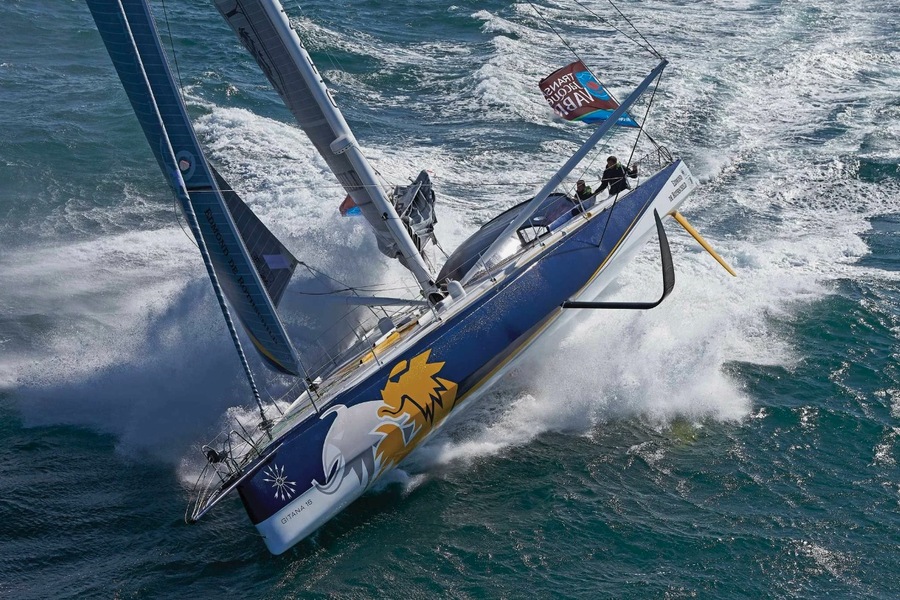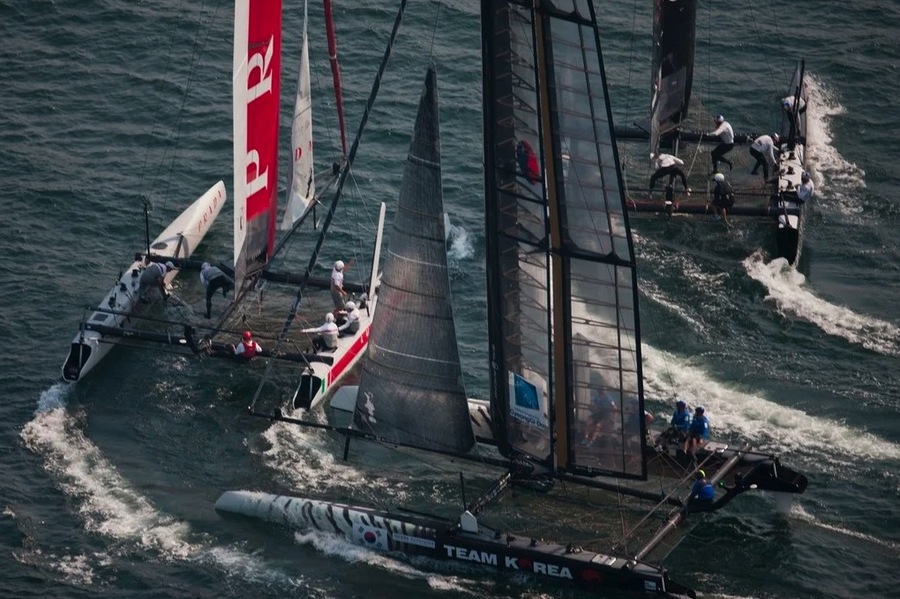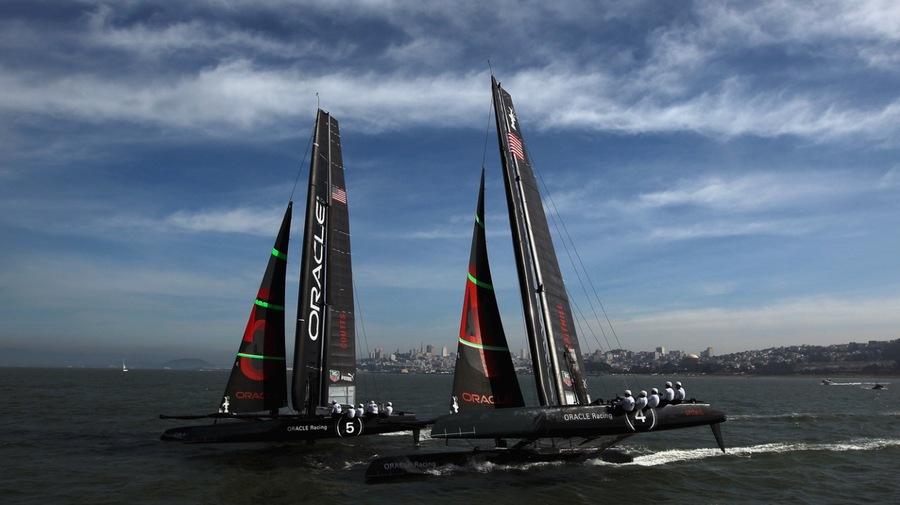
The America’s Cup: A Legacy of Sailing Excellence
The America’s Cup is the oldest international competition in all sports, with a rich history dating back to 1851. It all began when the Queen of England organized a regatta around the Isle of Wight, orchestrated by the British Royal Yacht Squadron. The main prize was a silver cup, a symbol of nautical supremacy that would come to be known worldwide as the America’s Cup. For those looking to experience a taste of this prestigious event, finding a yacht for rent can provide a luxurious and immersive way to enjoy sailing and the grandeur of such historic races.
The Birth of a Legend
The New York Yacht Club rose to the challenge by designing and building the fastest gaff schooner of the era, aptly named “America,” by patriotic traditions. On August 22, 1851, America competed against 15 yachts from the Royal Yacht Squadron in a race designed with a strategic twist. The route was complex, weaving between numerous rocks and shoals, which the British sailors, familiar with their home waters, had a distinct advantage in navigating.
However, the American team secured the services of a first-class English pilot whose daring maneuver around a lighthouse propelled America into an uncontested lead. So commanding was America’s performance that the second-place yacht finished 20 minutes later. Thus, in a formidable competition featuring the 15 best sailing ships of the time, America emerged victorious. The silver cup was brought back to the United States and placed in the New York Yacht Club archives, where it was renamed the America’s Cup.

A Trophy with a Story
In 1857, the victorious New York Yacht Club donated the cup for permanent international competition. Crafted in 1848 by Garrard and Co., the trophy is a bottomless jug engraved with the names of all the victorious yachts. According to legend, Queen Victoria omitted the goblet’s bottom to ensure that no one could drink from it. This detail adds a unique historical charm to the trophy.
Dominance and Diversity
Throughout its history, the America’s Cup has seen dominance by a few nations. While the United States claimed the cup for many years, only three other countries have won the prestigious trophy: Australia in 1983, Switzerland in 2003, and New Zealand on several occasions since 1995.
The Rules of the Race
The America’s Cup regatta is governed by specific rules and regulations to ensure fair competition and technological innovation.
Selection of Participants
Participants are chosen through preliminary races and challenges, leading to a showdown between the defending champion and the challenger. These selection races are known as the Louis Vuitton Cup, now renamed the Prada Cup, where challengers compete to become the official contenders against the defender.
Technical Standards and Classes
Yachts competing in the America’s Cup must adhere to stringent technical standards and belong to specific classes. This ensures the competition remains a test of skill, strategy, and cutting-edge technology. Over the years, the classes have evolved from the original schooners to the modern foiling catamarans and monohulls, reflecting advancements in naval architecture and materials science.
Right of Way Rules
Three primary rules determine right of way on the racecourse:
1. When yachts are on opposite tacks, the yacht with the wind on the port side must yield to the yacht with the wind on the starboard side.
2. When yachts are on the same tack, and there is no overlap, the trailing yacht must maintain distance.
3. When yachts are on the same tack and there is an overlap, the leeward boat has the right of way.
Penalties
If a team believes a rule has been violated, it raises a yellow and red/orange flag to alert the judges, who then rule on the incident. Depending on the severity of the infraction, penalties can include making a 360-degree turn or losing a set amount of time.
Financial Commitment
Each participating team contributes a significant entry fee, currently USD 3 million. This reflects the high stakes and the prestigious nature of the competition. In addition to the entry fee, teams often spend hundreds of millions of dollars on research, design, and construction of their yachts, as well as on training and logistics.
Determining the Winner
The winner of the America’s Cup is determined through a series of match races between the defending champion (the cup holder) and the challenger. The challenger is selected based on performance in preliminary qualifying competitions. The defending champion can choose the location and the type of yachts used for the final race. The victor is awarded the America’s Cup trophy, a symbol of sailing supremacy.
Innovation and Excellence
The America’s Cup is renowned for its history and role as a testing ground for the latest and most daring ideas and technologies in sailing. From its inception, the America’s Cup has been a showcase for the most advanced sailing ships, with each challenger building increasingly sophisticated yachts to vie for the title.
Economic Impact
The America’s Cup is one of the most expensive sporting competitions, with hundreds of millions of dollars in participant budgets. This investment underscores the prestige and high stakes associated with the race. Hosting the event also brings significant economic benefits to the host city, attracting tourism, sponsorships, and media coverage.

Legendary Races and Historic Moments
The America’s Cup has been the stage for many legendary races and historic moments. One of the most dramatic came in 1983 when Australia II ended the New York Yacht Club’s 132-year winning streak with its revolutionary winged keel. This victory was a technological triumph and a symbol of Australia’s ingenuity and determination.
In 2013, Oracle Team USA staged one of the greatest comebacks in sporting history. Trailing 8-1 to Emirates Team New Zealand in a best-of-17 series, Oracle Team USA won eight consecutive races to retain the America’s Cup. This remarkable turnaround was a testament to strategic brilliance, technological prowess, and unyielding perseverance.
Conclusion
The America’s Cup is more than a regatta; it is a legacy of maritime excellence, innovation, and international competition. From its historic inception in 1851 to its current status as the pinnacle of sailing achievement, the America’s Cup inspires sailors and enthusiasts worldwide. It is a testament to the enduring spirit of adventure and the relentless pursuit of perfection on the high seas.
Whether through technological innovation, thrilling races, or the sheer scale of investment and commitment, the America’s Cup remains a defining event in sailing. It is not just a race but a continuous evolution of what is possible on water, pushing the boundaries of human skill and engineering. As each new generation of sailors takes to the water, the legacy of the America’s Cup endures, a beacon of excellence in sailing.

Soccer lover, loves to cook, guitarist. Specializes in administrative technology and is responsible for educating other employees on using progressive systems and applications.